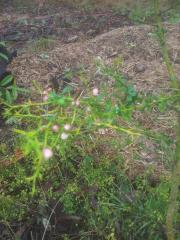-
Content count
348 -
Joined
-
Last visited
-
Days Won
6
Content Type
Profiles
Forums
Calendar
Blogs
Gallery
Store
Everything posted by Crop
-
Mate I think the interesting bit is not the scene itself, but how you interpreted it. Sounds like you are having a little internal struggle, that you already know the answer too. All that's left is to act on it.
-
Not an ethno doco, but still a great film. https://www.youtube.com/watch?v=xy86ak2fQJM
-
Got a mate in India that was one of his first disciple, calls himself Triplock, really fun dude.
-
Mate we tried to do this with me mum a few years back, and no one would even talk about the possibility. Do you know what the law is around this?
-
I remember my mum doing this back when I was a teen, she said she was trying to get it to live through the winter. The next year we moved back north were sativa is a perennial anyway. Grafting high up a trellis could make a good stealth grow though.
-
Don't know much about peroxide. Hormones can be fun to play with. They need to be used in moderation, some hormones compete against other hormones, so too much can start causing problems. Here's a quick break down of their different actions and interactions. https://www.ncbi.nlm.nih.gov/pmc/articles/PMC3142376/
- 8 replies
-
- 2
-

-
- hydrogen peroxide
- chemical
-
(and 1 more)
Tagged with:
-
And if heavy metals are not enough, mined phosphate used in commercial fertilisers are often radioactive, and there is no disclaimer for that. https://inis.iaea.org/collection/NCLCollectionStore/_Public/36/115/36115603.pdf For me the biggest issue is what these ferts do to the soil. To save me doing heaps of writing I will cut and paste a little bit from Toby Hemenway's book 'Gaia's Garden' Until the soil life is properly fed, the plants can’t eat. Conventional farming gets around this problem by flooding the soil with inorganic fertilizer, ten times what the plants can consume. But this, the engineer’s approach rather than the biologist’s, creates water pollution and problem-prone plants. The soil life, and the soil itself, suffers from the imbalance. Here’s what happens to soil life after overzealous application of chemical fertilizer. Mixing inorganic fertilizer with soil creates a surplus of mineral nutrients (an excess is always needed, since so much washes away). Now the food in short supply is carbon. Once again, the soil life roars into a feeding frenzy, spurred by the more-than-ample nitrogen, phosphorus, and potassium in typical NPK fertilizers. Since organisms need about twenty parts carbon for every one of nitrogen, it isn’t long before any available carbon is pulled from the soil’s organic matter to match all that nitrogen and tied up in living bodies. These organisms exhale carbon dioxide, so a proportion of carbon is lost with each generation. First the easily digestible organic matter is eaten, then, more slowly, the humus. Eventually nearly all the soil’s carbon is gone (chemically fed soils are notoriously poor in organic matter), and the soil life, starved of this essential food, begins to die. Species of soil organisms that can’t survive the shortages go extinct locally. Some of these creatures may play critical roles, perhaps secreting antibiotics to protect plants, or transferring an essential nutrient, or breaking down an otherwise inedible compound. With important links missing, the soil life falls far out of balance. Natural predators begin to die off, so some of their prey organisms, no longer kept in check in this torn food web, surge in numbers and become pests. Sadly, many of the creatures that remain after this mineral overdose are those that have learned to survive on the one remaining source of carbon: your plants. Burning carbon out of the soil with chemical fertilizers can actually select for disease organisms. All manner of chomping, sucking, mildewing, blackening, spotting horrors descend on the vegetation. With the natural controls gone and disease ravishing every green thing, humans must step in with sprays. But the now-destructive organisms have what they need to thrive—the food and shelter of garden plants—and they will breed whenever the now essential human intervention diminishes. The gardener is locked on a chemical treadmill. It’s a losing battle, reflected in the fact that we use twenty times the pesticides we did fifty years ago, yet crop losses to insects and disease have doubled, according to USDA statistics.
- 8 replies
-
- 3
-

-
- hydrogen peroxide
- chemical
-
(and 1 more)
Tagged with:
-
They make great grafting knives.
-
Not sure about down your way, but in the north its still illegal to posses or sell a commercial quantity. You can grow your own. Whats called 'Hawaiian Black' in Australia is the easiest variety to come by. If any one has any others, please let me know.
-
Interesting thread, I think ethical harvesting is just another way of saying 'sustainable harvesting'. By that I mean it is 'ethical' if you harvest in such a way that allows you to return to the same location every year, with out causing a decline in that particular resource.
-
We were fined $1500 for taking too long to register our son's name. So I suppose it is illegal. I do know several people who have never had a bank account, licence or any other id, but it's getting hard to live like this. I helped one old fella get a licence last year. He was in his sixties, was born under a tree, so no record of birth and was outraged that after all these years police have now started to pull him over and demand he conform.
-
-
Good effort ace, I'll tack one of your straw, and milky, which of your oysters do you recon will do best in tropical heat. I'll pm ya.
-

Serious Slug problem - Solution needed!
Crop replied to TheMooseZeus's topic in Sustainable Technologies & Ethical Living
Blue Tongues will definitely hang around. We once put 3 in our house to clean up the cockys and those feral geckos from Indo. They stayed in the house for a couple of years. Did a good job, without much problem. A bit of a mess, but less than the geckos and the mean little one that lived under the stove used to bite your toes when you were cooking if you weren't careful. -

Serious Slug problem - Solution needed!
Crop replied to TheMooseZeus's topic in Sustainable Technologies & Ethical Living
I've never really had a slug problem, so are only speaking from distant academic, memory's from a seriously abused mind. Crushed egg shells and coffee grounds are both supposed to help. I think marigolds, along with things like comfrey are used as trap plants in a 'push pull' system. Slugs make their home in them during the day. In permaculture you would plant them near a frog pond, or over the fence in your duck yard. I think Mollison spoke about it in one of his lectures, but I don't remember which one, or even if it was someone else like Lawton. If anyone is interested I can post the lecture series and you's can go through them yourselves. -

Serious Slug problem - Solution needed!
Crop replied to TheMooseZeus's topic in Sustainable Technologies & Ethical Living
Ducks. -
Obviously a marketing film, with really bad translation, but it's interesting how they grow the Kratom in knee deep water.
-
I think the problem is more how cemetery's are run, than what your buried in. I don't know how it works in the U.S. but here your options are limited. However they only embalm your body if you ask for an open coffin funeral. If you want a closed coffin, they just chuck you in a box. If you don't want to wast money or resources, that box can be cardboard. There is still the problem of how deep they bury you, and finding a deep rooted plant that they will allow you to grow in the cemetery.
-
I don't see how the pods are any better than a card board coffin. The mushroom suit is a good idea, but instead of looking at our carcass as a waste that needs to be decomposed, couldn't we look at it as a resource? Maybe some sort of fertiliser along the lines of Charlie Carp.
-
The mother plant is still producing.
-

Monsanto’s Roundup Found in 75% of Air and Rain Samples
Crop replied to DiscoStu's topic in Sustainable Technologies & Ethical Living
-
Nammex is a Canadian bulk producer. Can get in Australia from Create Your Own Supplements in capsules, https://www.createyourownsupplement.com.au/product-page/lions-mane-hericium-erinaceus-capsules or powder, https://www.createyourownsupplement.com.au/product-page/lions-mane-hericium-erinaceus-20-polysaccharides-standardised-extract
-
Great comp, and this may be the only place the average joe wins anything out of this.
-
Yeh, there's not doubt he's very rapped up in his own ideas and he has a tenancy to over simplify complex problems (something the elephants learned the hard way). However this fella's not just an academic, he has been out there, doing this, on a fairly large scale, for a long time and getting results. Maybe he offers some of the solution, for some situations. For instance large parts of Australia's north are being taken over by gamba grass. Gamba is a perennial clumping grass from Africa, introduced by cow cockeys back in the eighties. each year the clumps get bigger. 3-4m high and the same wide is already common. It has a high nitrogen content so burns hot. Combine that with a pyromaniacal bush fire council and you have regular fires, that are so hot they can kill mature Eucalypt's (not to mention all the the fury critters), turning woodlands into grasslands in as little as 10 years. The only success I've ever seen at controlling gamba, over a largish area, especially in woodland , is by rotational grassing of water buffalo. Personally I've never let hooved stock on my place, but I've also watched my once pristine forest degrade to the point I don't live there any more. This is only a short Ted Talk, might be worth a better look.



